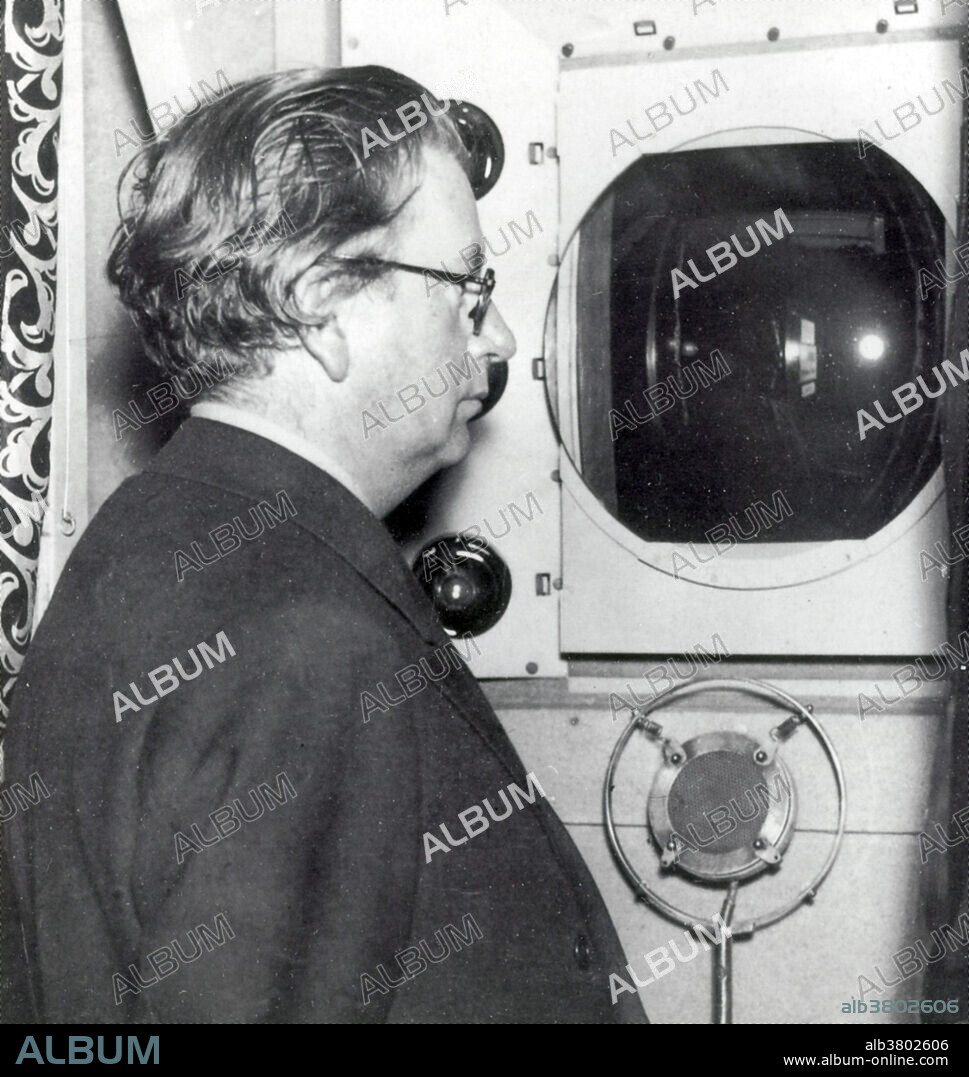alb3802606
John Logie Baird, Scottish Inventor

|
Add to another lightbox |
|
Add to another lightbox |



Title:
John Logie Baird, Scottish Inventor
Caption:
Editorial use only . John Logie Baird (1888-1946), Scottish scientist, engineer, innovator and inventor of the world's first television. He built what was to become the world's first working television set using items including an old hatbox and a pair of scissors, some darning needles, a few bicycle light lenses, a used tea chest, sealing wax and glue. In 1925, he successfully transmitted the first television picture with a greyscale image: the head of a ventriloquist's dummy nicknamed Stooky Bill. Thus many historians credit him with being the first to produce a live, moving, greyscale television image from reflected light. He made many contributions to the field of electronic television after mechanical systems had taken a back seat. In 1939, he showed colour television using a cathode ray tube in front of which revolved a disc fitted with colour filters. In 1944, he gave the world's first demonstration of a fully electronic colour television display.
Credit:
Album / Science Source / New York Public Library
Releases:
Model: No - Property: No
Rights questions?
Rights questions?
Image size:
3600 x 3806 px | 39.2 MB
Print size:
30.5 x 32.2 cm | 12.0 x 12.7 in (300 dpi)
Keywords:
1888 • 1946 • 20 XX TWENTIETH CENTURY • 20TH CENTURY • 20TH • BAIRD • BRITISH • BROADCAST • CELEBRITY • CENTURY • COLOR • COLOUR • COMMUNICATION • E-COMMERCE • ELECTRONIC COMMERCE • ELECTRONIC SYSTEM • ELECTRONIC • ELECTRONICS • ENGINEER • EUROPEA • EUROPEAN • FAMOUS • FIGURE • GREYSCALE • HISTORIC • HISTORICAL • HISTORY • IMPORTANT • INNOVATOR • INVENTION • INVENTOR (MALE) • INVENTOR • JOHN • LOGIE • MALE • MAN • MEN • NOTABLE • PEOPLE • PERSON • PERSONALITIES • PERSONALITY • PHOTO • PHOTOGRAPH • PHOTOGRAPHIC • SCIENTIST • SCOTTISH • TECHNOLOGICAL • TECHNOLOGY • TELECOMMUNICATION • TELEVISION (MEDIA) • TELEVISION SET = TV SET = TELLY • TELEVISION SET • TELEVISION • TELLY • TRANSATLANTIC • TRANSMISSION • TV SET • TV • TWENTIETH CENTURY • WELL-KNOWN
 Pinterest
Pinterest Twitter
Twitter Facebook
Facebook Copy link
Copy link Email
Email

